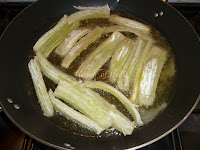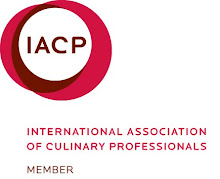
Cotecchino is a specialty of northern Italy and the Emilia Romagna region (also spelled cotechino or coteghino) and is a large, fresh pork sausage, usually about 3 inches wide and 9 inches long. It's made from pork meat from the cheek, neck, shoulder, fatback, and pork rind. Cotecchino is mildly seasoned, often with nutmeg, salt and pepper and has a soft, creamy texture. Cotecchino is traditionally served at New Year’s with lenticchie (lentils). The lentils resemble small coins and are said to bring prosperity, and the sausage is said to bring good luck.
Cotecchino dates back to 1511 to Mirandola, near Modena in the Emilia Romagna region. While under siege from Pope Julius II’s troops the locals began to encase pork in pig skin to survive, using as much of the pig as possible. Since the 1500’s cotecchino has risen in popularity and nearly a decade ago gained PGI status (Protected Geographical Indication). PGI status, established by European Union law, protects the names and reputation of regional foods, and ensures their quality and flavor. Cotecchino is now produced throughout Italy by large producers, but the tastiest cotecchino is still made artigianally by local butchers. I always order one made in Norcia in the Umbria region, a town famous for outstanding pork products. I also purchase Umbrian lenticchie, purported to be the best.
Ingredients (4 people):
Cotecchino, about 800 grams
Lenticchie, about 300 grams
Olive oil, 3 tbsps.
Carrot, 1 medium
Celery stalk
Onion, 1 small
Vegetable broth
Tomato paste, 2 tbsps.
Bay leaves, 5
Prick the cotecchino with a sewing needle (anything larger, such as a fork, may cause the cotecchino to burst during cooking). Place the cotecchino in a pot of cold water and bring to a boil. Simmer for an hour, drain the liquid, add fresh water and boil another hour. This will eliminate much of the fat.
Soak the lentils overnight. Drain, place in cold water, and bring to a gentle boil. Cook until tender. In the meantime, finally chop the carrot, celery and onion and sauté in olive oil until tender. Add a few ladlefuls of broth, tomato paste and the bay leaves. Add the lentils once they are tender.
Remove the cotecchino from its casing and slice into half centimeter slices. Add the cotecchino to the lentils and simmer for 20 to 30 minutes, adding broth as necessary. Remove the bay leaves and serve.






























